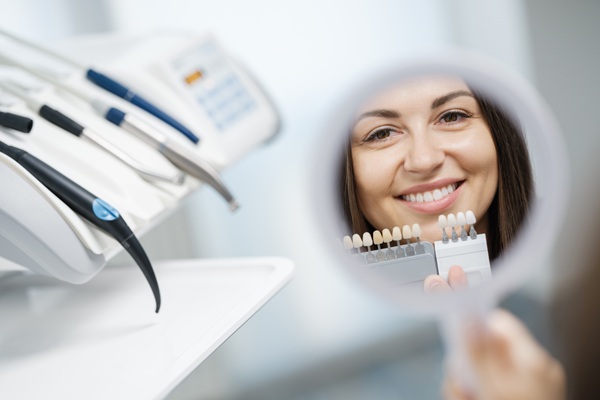What Is a TMJ Disorder?

Disorder of the temporomandibular joint, or TMJ, is a condition that can cause difficulty with jaw functions. The disorder can cause jaw pain that restricts how you open and close your mouth. You might notice clicking sounds or jaw locking when eating, talking or yawning. Continue reading to learn more about the symptoms, diagnosis and treatment of TMJ disorder.
The structure of the TMJ
The temporomandibular joint connects the mandible to the temporal bone of the skull. A small bit of cartilage called an articular disc is present between the two bones. When opening and closing the mouth, the disc moves as the jaw bone rotates and glides back and forth to enable movement.
Different muscles connect near the temporomandibular joint. The muscles allow easy opening and closing of the jaw for talking, eating and other mouth functions. Various ligaments connect the bones to make the joint stable.
Disorders of the TMJ
Symptoms of TMJ disorder often start slowly without connection to specific condition or injury. Patients may experience pain when chewing hard foods. The pain is usually intermittent and often starts after exerting too much pressure on the jaw or when opening the mouth wide, like when yawning. Some of the common causes of the condition include:
- Muscle spasms
- Dislocation of the articular disc in the joint
- Forward head posture
- Teeth grinding or clenching
- Stress
When the jaw joint is subjected to excessive stress, pain and joint movement dysfunction may occur. This may cause inflammation of the joint and muscles around the temporomandibular joint.
Diagnosing TMJ disorder
Anyone experiencing pain in the jaw joint will need to visit a dental professional. The dentist will ascertain the cause of the pain and provide a diagnosis of the condition. TMD diagnosis is mostly obtained through a clinical exam. The dentist may palpate the jaw joint and muscles, checking for tenderness or clicking when opening or closing the mouth.
The dentist will also check the jaw’s range of motion, searching for misalignments. Sometimes, the jaw may open properly on one side and not the other, forcing the jaw to move to one part when opening the mouth. Also, an x-ray may be taken to check for arthritis around the TMJ, and an MRI may reveal the situation of the articular disc in the jaw. After making a diagnosis, the dentist can work toward developing a treatment plan for the patient.
Depending on the patient’s condition, some of the treatment options for TMJ disorder include:
- Medications
- Stabilization splints or bite guards
- Physical therapy
- Dental Botox to reduce tension in the jaw muscles
- Cognitive-behavioral therapy to relieve stress
In rare cases, orthodontic treatment, arthrocentesis and joint replacement surgery might be recommended. The dentist will discuss the benefits and risks of these procedures and continue to monitor the patient during treatment.
Do you think you may be suffering from TMJ disorder?
Some patients with TMJ disorder get better without treatment. However, if you are experiencing symptoms of the condition, it is advisable to visit a dentist for diagnosis and treatment.
Request an appointment here: https://myfresnodentist.net or call Complete Dental at (559) 448-9000 for an appointment in our Fresno office.
Check out what others are saying about our dental services on Yelp: TMJ Dentist in Fresno, CA.
Related Posts
Jaw pain is usually symptomized by throbbing pain. It can start abruptly, or mildly at first and worsen over time. Regardless, the symptoms depend on the origin of the pain. Knowing the causative agent is the first course of action in treating this condition. One of the most common causes of jaw pain is misaligned…
In the dental community, TMJ disorders are a relatively common issue. Many adults experience the telltale signs of jaw problems at some point in time. These can include:InflammationPain or sorenessTension and stiffnessClicking/popping when opening or closing the mouthTrouble opening the mouth fullyFor some people, TMJ disorder is a serious, chronic problem that requires medical intervention.…
People all over the country suffer from temporomandibular joint disorder, but many fail to seek TMJ treatment. Far from being a minor nuisance, this condition can be easily aggravated by many daily activities and can cause multiple complications if left untreated. Here are just a few consequences of ignoring symptoms of this disorder and allowing…
The temporomandibular joint of the jaw connects the bone to the skull and is responsible for movements of the jaw.Temporomandibular joint disorders, commonly called TMJ, cause pain in this jaw’s joint and the surrounding muscles that are responsible for movement and function. The cause of most TMJ disorders is often unknown but can be related…


